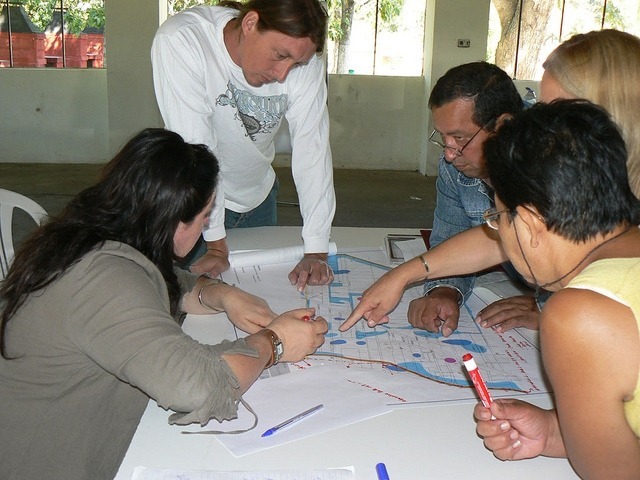-
The Hospital Safety Index – Pan American Health Organization (2008)
A low-cost reliable tool, providing decision makers with an overall idea of a hospital’s ability to remain functioning in emergencies and disasters. Manual and forms for assessing safety. -
UNDRR Safe Hospitals Campaign: 10 Basic Facts to Know – WHO, World Bank (2008)
Ten things to keep in mind about the importance of critical facilities such as hospitals in disaster situations. -
One Million Safe Schools and Hospitals: Assessment and Mitigation Planning for Risk Reduction – UNDRR and partners
An advocacy initiative encouraging communities, organisations and individuals to make a commitment to taking action on making schools and hospitals safer (search under Information Materials for tools) -
Guidelines on Non-structural Safety in Health Facilities – Ministry of Health of Nepal (2004)
Mitigation measures that can make a difference in whether or not a hospital can continue to function in disaster situations. -
School Disaster Reduction and Readiness Checklist- Risk Reduction Education for Disasters – RiskRed (2008)
Checklist for disaster reduction in schools. -
Guidance Notes on Safer School Construction – UNDRR, INEE, World Bank
Guiding principles and general steps to develop a plan for disaster-resilient construction and retrofitting of schools -
Safe Hospitals: A Collective Responsibility, A Global Measure of Disaster Reduction – PAHO/WHO (2005)
An advocacy brochure that makes the case for why health facilities must be disaster resilient.


"It is important to ensure that all institutions relevant to a city’s resilience have the capabilities they need to discharge their roles."
Understanding a city’s institutional background regarding risk reduction/management and building resilience can help in detecting current gaps in local capacity to coordinate and act towards prevention, mitigation, response and recovery in the case of disasters, as well as identifying the best and most-effective approaches to strengthen relevant institutions for managing disaster risk. Institutions include, as applicable, central, state and local government organizations. Other groups also have a role to play in reducing some of the vulnerabilities, which is complementary to government measures, such as private sector organizations providing public services (depending on locale, this may include phone, water, energy, healthcare, road operations, waste collection companies and others as well as those volunteering capacity or equipment in the event of a disaster); industrial facility owners and operators; building owners (individual or corporate); NGOs; professional, employers’ and labour organizations; and cultural institutions and civil society organizations.
- Establish a shared understanding of roles and responsibilities.
- Develop skills, including but not limited to: hazard/risk assessment, risk-sensitive planning (spatial and socioeconomic), integrating disaster and climate risk considerations in project evaluation/design (including engineering design) , co-ordination, communication, data and technology management, and disaster management, response, recovery, assessment of structures post disaster; business and services continuity planning).
- Organize trainings, ideally based on case studies of how disaster risk reduction can be implemented and what business continuity requires.
- Create and implement information and data frameworks for resilience and disaster risk reduction that build consistency in data capture and storage and enable data access, use and re-use by multiple stakeholder groups for regular development processes.
The government of Thailand has launched an ambitious slum and squatter upgrading initiative. The Baan Mankong (secure housing) programme channels funds in the form of infrastructure subsidies and housing loans directly to community organisations of low-income inhabitants in informal settlements. The funding comes almost entirely from domestic resources – a combination of national government, local government and community contributions. Within this national programme, illegal settlements can obtain legal land tenure through a variety of means such as direct purchase from the landowner (supported by a government loan), negotiating a community lease, agreeing to move to another location provided by the government or agreeing with the landowner to move to part of the site they are occupying in return for tenure of that site (land sharing).
For more information: http://tinyurl.com/72p7375
Santa Tecla is part of the metropolitan area of El Salvador’s capital, San Salvador. “Santa Tecla, suffered two earthquakes in 2001. In just five seconds, a mudslide caused more than 700 deaths, displaced 20% of the city, and badly damaged 38% of the infrastructure. Real estate prices plummeted. We had to think deeply about what we could do,” says Oscar Ortiz, the Mayor. “In order to turn our city around and make it disaster resilient, we realized we needed to stop improvising when disaster strikes and start planning ahead. We need to manage our land in a responsible and sustainable manner. We developed a ten-year plan to redevelop the city and now have a longer-term plan for a sustainable future through 2020. Citizens need to understand the significance of what we are doing or very little change will take place. We try to do this by encouraging participation in ‘Mesas de Ciudadanos’ (citizens groups), which bring a wide cross section of different stakeholder organisations together in periodic discussions and decision making. They soon come to understand that these are issues and decisions that concern their livelihood, their children, their schools and their productivity.” (Source: Interview with Mayor Oscar Ortiz, February 2011, UNDRR)
For more information: http://www.santatecladigital.gob.sv/ Click on: Gestión de Riesgos 13.11 (in Spanish).
